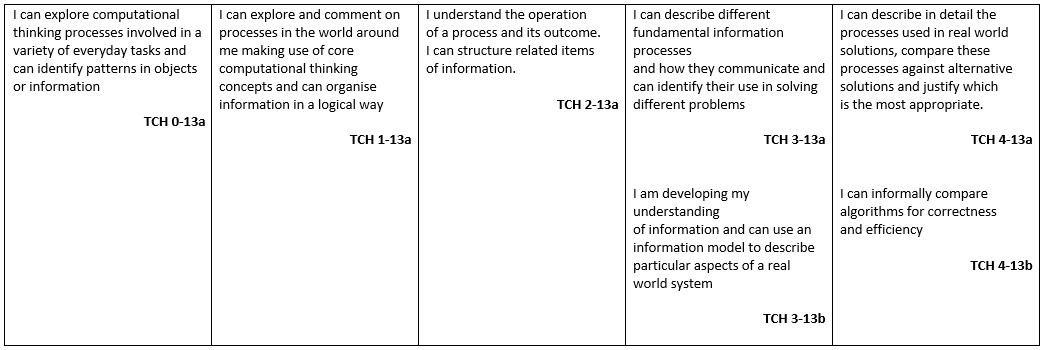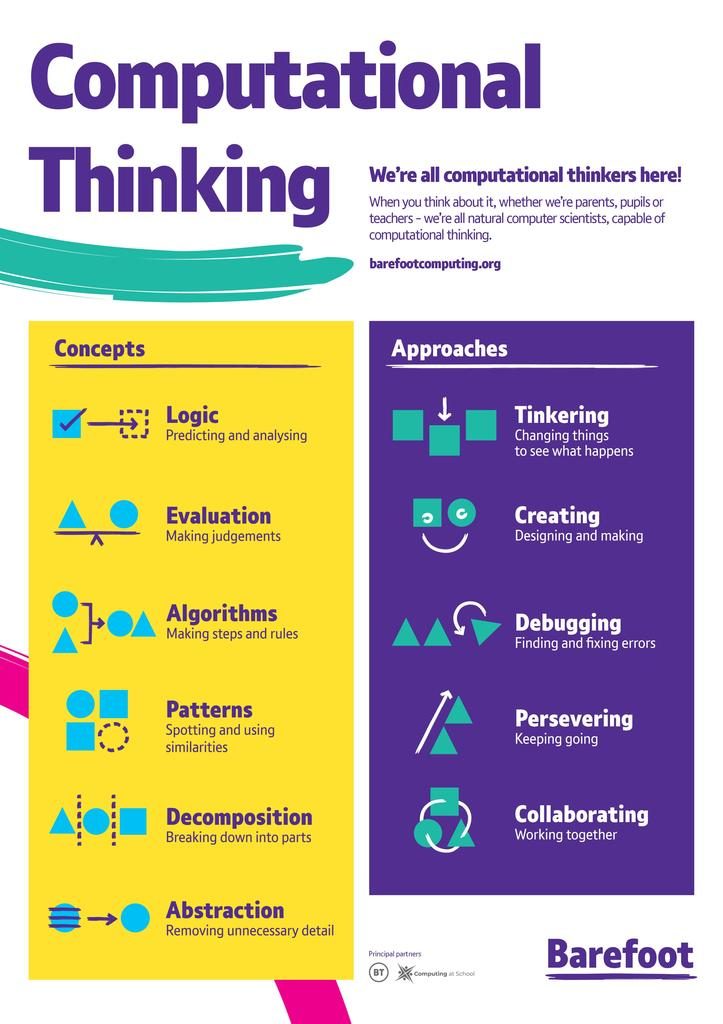Computational thinking is a process of understanding and solving problems presented to us. It is a systematic process that encourages breaking a problem into smaller parts, identifying the key elements and discarding the superfluous, and then building a solution in a logical, ordered way. This makes it very similar to mathematical thinking, and indeed there is much research linking the benefits of using the two together.
There are many opportunities to embed these concepts and approaches into your curriculum, especially in numeracy and mathematics. Instead of learners trying to work out a route in a textbook exercise they could programme a beebot to follow a path, try to solve a code.org challenge with directional language or test a a range of skills and strategies with Bebras.
This organiser deals with learners’ ability to identify sequences and steps in a process, classify and group objects and identify patterns and similarities between objects. From Early to First levels, learners should be developing the ability to follow step-by-step instructions, make logical decisions and group information in a logical way. In terms of computing, learners should be able to identify repetition, Boolean and IF statements. By Second level, learners should be able to identify parallel processes, random processes and conditional statements.
Third and Fourth level sees the introduction of two additional E/Os and learners should be able to identify communication systems in the world around them, understand how compression and encryption of data works, and understand that a database can be used to store data with unique identifiers.

There are lots of great, free computational thinking resources and activities available online. Many of these resources have the added benefit of being ‘unplugged’, meaning no devices or computers are required to teach them.
In Scotland, we have partnered with Barefoot Computing and they provide an excellent computational thinking programme and resources. Barefoot splits computational thinking into the concepts and approaches below:



